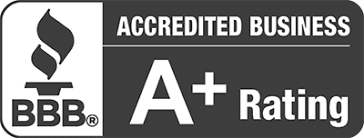A business can utilize an assortment of valuing procedures while selling an item or administration. To decide the best valuing technique for an organization, senior leaders need to initially distinguish the organization’s estimating position, evaluating fragment, valuing capacity, and serious valuing response procedure. Evaluating techniques and Payless Power strategies fluctuate from one organization to another, and furthermore contrast across nations, societies, ventures, and over the long run, with the development of businesses and markets and changes in more extensive monetary circumstances. Evaluating techniques decide the cost organizations set for their items. The cost can be set to expand productivity for every unit sold or from the market in general. It can likewise be utilized to guard a current market against new contestants, to increment a piece of the pie inside a market, or to enter another market. Estimating procedures can carry both upper hands and impediments to a firm and frequently direct the achievement or disappointment of a business; hence, picking the right strategy is critical.

Model of Estimating
- Ingestion evaluating
Strategy for evaluating in which all expenses are recuperated. The cost of the item incorporates the variable expense of everything in addition to a proportionate measure of the proper expenses. The ingestion estimating can be determined by means of ‘(Unit Variable Expenses + (Above + Overseeing Expenses))/Measure of units created. Fixed/Variable Expenses, Direct/Roundabout Expenses, Worker Pay rates, Utility Expenses, and different sorts of expenses can be determined by applying the Assimilation Evaluating Technique.
- Commitment edge based estimating
Commitment edge-based estimating augments the benefit got from a singular item, in light of the contrast between the item’s cost and variable expenses (the item’s commitment edge per unit), and on one’s presumptions with respect to the connection between the item’s cost and the number of units that can be sold costing that much. In cost-in addition to valuing, an organization initially decides its make back the initial investment cost for the item. This is finished by working out every one of the costs engaged with the creation, for example, unrefined substances utilized in its transportation and so on, advertising, and appropriation of the item. Then a markup is set for every unit, in view of the benefit the organization needs to make, its deals goals, and the cost it accepts clients will pay. For instance, on the off chance that the organization needs a 15 percent net revenue and the make back, the initial investment cost is $2.59, and the cost will be set at $3.05.
- Cost in addition to valuing
Cost as well as esteeming is a cost-based methodology for setting the expenses of work and items. Under this strategy, the prompt material cost, direct work cost, or more expenses for a thing are added up and added to a markup rate (to make a general income) to construe the expense of the thing.
- Creaming or skimming
Cost skimming happens when merchandise is evaluated higher so fewer deals are expected to make back the initial investment. Selling an item at an exorbitant cost, and forfeiting high deals to acquire a high benefit is thusly “skimming” the market. Skimming is generally utilized to repay the expense of speculation of the first examination into the item: usually utilized in electronic business sectors when another reach, like blue ray players, are sold at an exorbitant cost, first and foremost. This technique is in many cases used to target “early adopters” of an item or administration. Early adopters for the most part have moderately lower cost responsiveness — this can be credited to their requirement for the item offsetting their need to streamline; a more noteworthy comprehension of the item’s worth; or essentially having higher extra cash.
- Fake evaluating
Technique for estimating where the merchant offers something like three items, and where two of them have a comparable or equivalent cost. The two items with comparable costs ought to be the most costly ones, and one of the two ought to be less alluring than the other. This technique will make individuals contrast the choices and comparable costs; subsequently, deals of the more appealing and expensive things will increment.

